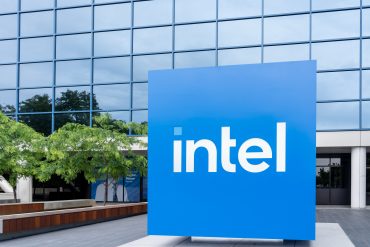
- Quantum & Chips
Nvidia Nears $4 Trillion Valuation as Shares Hit Record High
6 minute read

Nvidia’s AI chip dominance fuels historic market rally as enterprise demand drives record-breaking revenue growth
Key Takeaways
- Nvidia nears $4 trillion valuation milestone as shares hit record high of $154.31, lifting market cap to $3.77 trillion and reclaiming title as world’s most valuable company
- Revenue surges 78% year-over-year to $39.3 billion in Q1 2025, with analysts projecting potential $6 trillion market cap by 2028 driven by AI infrastructure demand
- Geopolitical headwinds cost $2.5 billion in Q2 2025 due to U.S. export restrictions on China, with projected $8 billion impact in Q2 2026
Introduction
Nvidia stands on the precipice of becoming the first company to achieve a $4 trillion market valuation, marking an extraordinary milestone just two years after becoming the first chipmaker to reach $1 trillion. The AI giant’s shares surged to record highs this week, closing at $154.31 and pushing its market capitalization to $3.77 trillion.
This remarkable ascent reflects Nvidia’s dominance in the artificial intelligence revolution, where its graphics processing units have become essential infrastructure for training large language models and powering data centers. The company’s near-monopoly position in AI accelerators has transformed it from a gaming chip manufacturer into the backbone of the global AI economy.
Key Developments
Nvidia’s financial performance demonstrates the scale of AI adoption across enterprise markets. The company reported $39.3 billion in revenue for Q4 fiscal 2025, representing a 78% year-over-year increase and 12% sequential growth. Full-year fiscal 2025 revenue reached $130.5 billion, marking a 114% annual surge.
The company’s AI infrastructure sales hit $35.6 billion in Q4 2024, a 93% year-over-year jump that underscores enterprise demand for AI capabilities. Net income soared to $72.88 billion in fiscal 2025, representing a 145% increase from the previous year and driving profit margins that far exceed traditional semiconductor companies.
Nvidia’s latest Blackwell architecture has become central to its growth strategy, powering new supercomputers and generating billions in quarterly sales. The recent launch of the RTX 5050 GPU targets mainstream consumers at a $249 price point while delivering 60% performance improvements over its predecessor.
Market Impact
Nvidia shares extended gains on Thursday, rising approximately 1% to $155 after hitting Wednesday’s record close. The stock’s performance has allowed the company to reclaim its position as the world’s most valuable company, surpassing both Microsoft and Apple in market capitalization.
The company now commands 92% of the desktop graphics market, up from 84% in the previous quarter, significantly outpacing competitors AMD and Intel. This market dominance translates into premium valuations, with Nvidia trading at 23x forward EV/EBITDA compared to AMD’s 11.5x and Intel’s 15x ratios.
Analyst price targets have climbed aggressively, with some reaching as high as $250 per share. This implies a potential $6 trillion market capitalization, reflecting expectations for continued AI infrastructure investment by hyperscale cloud providers.
Strategic Insights
Nvidia’s competitive moat centers on its integrated hardware and software ecosystem for AI development. The company’s CUDA programming platform and specialized AI accelerators create switching costs that lock customers into its technology stack. This positioning becomes increasingly valuable as enterprises scale their AI deployments.
The shift toward AI factories represents a significant expansion opportunity. These vertically integrated data centers require massive compute resources, with CEO Jensen Huang estimating that every gigawatt of demand translates to $40-50 billion in Nvidia revenue. This suggests a pipeline worth $450-900 billion in potential sales.
However, competitive pressure mounts as AMD gains ground in data center markets. AMD’s EPYC processors now hold 39.4% of the data center market, up from 25% in 2023, while its MI300X GPUs offer cost advantages of 20-30% compared to Nvidia’s solutions.
Expert Opinions and Data
Loop Capital’s Ananda Baruah raised his Nvidia price target to $250, among the most bullish projections on Wall Street. Baruah projects data center revenue could more than triple from $115 billion in fiscal 2025 to $367 billion by fiscal 2028 as cloud providers expand AI infrastructure investments.
Bloomberg reports that hyperscale spending on non-CPU compute could increase from 15% of infrastructure budgets to 50-60% by 2028. This shift reflects the compute-intensive nature of new reasoning models, which require up to 150 times more processing power than traditional applications.
“We’re entering the next ‘Golden Wave’ of Gen AI adoption,” Baruah noted. “Nvidia is at the front-end of another material leg of stronger-than-anticipated demand.” Industry projections suggest AI infrastructure spending could reach $2 trillion by 2028, driven by both private sector adoption and government investments in critical applications.
Conclusion
Nvidia’s path to a $4 trillion valuation reflects its central role in the artificial intelligence transformation reshaping global technology infrastructure. The company’s dominant market position and expanding profit margins demonstrate the strategic value of its AI-focused hardware and software ecosystem.
Geopolitical restrictions and intensifying competition present near-term challenges, but the fundamental demand drivers for AI compute remain robust. Nvidia’s ability to maintain its technological leadership while navigating these headwinds will determine whether it can sustain its unprecedented valuation trajectory.








